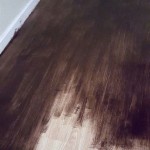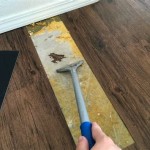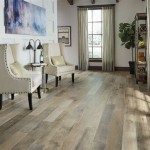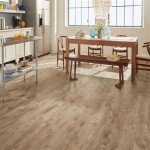Uniboard Laminate Flooring Reviews: A Comprehensive Overview
Uniboard is a prominent North American manufacturer of engineered wood products, including a wide range of laminate flooring options. Understanding the nuances of Uniboard laminate flooring requires a detailed examination of its features, advantages, potential drawbacks, and customer feedback. This article aims to provide a comprehensive overview of Uniboard laminate flooring reviews, helping consumers make informed decisions based on factual information.
The laminate flooring market is saturated with various brands and products, each promising durability, aesthetic appeal, and ease of installation. Uniboard attempts to differentiate itself through its diverse product lines, focusing on realistic wood visuals, advanced surface treatments, and commitment to sustainability. However, the actual performance of these floors under real-world conditions is crucial for potential buyers. This article will delve into aspects such as wear resistance, water resistance, installation complexities, and available styles to provide a balanced perspective.
Key Point 1: Durability and Wear Resistance
One of the most significant factors influencing consumer decisions regarding laminate flooring is its expected lifespan and resistance to wear and tear. Uniboard laminate flooring utilizes an overlay film designed to protect the decorative layer underneath. The thickness and composition of this overlay directly affect the floor's ability to withstand scratches, dents, and fading from sunlight exposure. Uniboard offers various AC (Abrasion Class) ratings to indicate the floor's durability level, ranging from AC1 for light residential use to AC5 for heavy commercial applications.
Higher AC ratings signify greater resistance to abrasion. Selecting the appropriate AC rating for the intended use is crucial. For instance, a high-traffic area like a living room or hallway benefits from a higher AC rating (AC3 or AC4), while a bedroom might suffice with an AC2 or AC3 rating. Consumer reviews often highlight the importance of matching the AC rating to the actual usage of the room. Choosing a floor with a lower AC rating than required for a high-traffic area often leads to premature wear and dissatisfaction.
The core board of the laminate plank also plays a vital role in durability. Uniboard utilizes High-Density Fiberboard (HDF) in its laminate flooring products. The density of the HDF core influences the floor's resistance to impact damage and its overall stability. Denser HDF cores are less likely to chip or dent compared to lower-density alternatives. Furthermore, the quality of the HDF core affects the floor's ability to withstand moisture. Poor quality HDF can swell and warp when exposed to humidity or spills, severely compromising the integrity of the floor.
Consumer reviews frequently mention instances of chipping or scratching, particularly in lower-rated AC categories or under conditions of heavy use. Proper maintenance, including the use of floor protectors under furniture and regular sweeping to remove abrasive particles, can significantly extend the lifespan of Uniboard laminate flooring.
Key Point 2: Water Resistance and Moisture Management
Water resistance is a critical consideration for any type of flooring, especially in areas prone to spills or high humidity, such as kitchens, bathrooms, and basements. While laminate flooring is generally more water-resistant than real hardwood, it is not entirely waterproof. Uniboard offers laminate flooring with varying degrees of water resistance, often incorporating features like tight-locking systems and surface treatments to minimize water penetration.
The effectiveness of the locking system is paramount in preventing water from seeping between the planks and damaging the HDF core. A tight, secure locking system minimizes gaps and creates a barrier against moisture. Uniboard's locking systems are designed to be easy to install and maintain a tight seal over time. However, consumer feedback indicates that the quality of the locking system can vary between different product lines. Some users report that certain Uniboard laminate flooring installations are more prone to water damage than others, particularly in areas with prolonged exposure to moisture.
Another crucial aspect of moisture management is the surface treatment applied to the laminate plank. Water-resistant coatings and sealants can help repel liquids and prevent them from penetrating the surface. Uniboard utilizes various surface treatments designed to enhance water resistance. However, these treatments are not foolproof, and spills should still be cleaned up promptly to prevent potential damage. Standing water, even for short periods, can potentially seep into the seams and affect the underlying HDF core.
Proper subfloor preparation is essential for maximizing the water resistance of Uniboard laminate flooring. A level and dry subfloor provides a stable base for the laminate planks, preventing movement and minimizing the risk of gaps forming. Installing a moisture barrier beneath the laminate flooring is also recommended, especially in basements or other areas prone to high humidity. This barrier helps prevent moisture from rising from the subfloor and damaging the laminate planks from below.
Consumer reviews often point to instances of water damage, particularly in areas where spills were not cleaned up promptly or where the subfloor was not properly prepared. While Uniboard laminate flooring offers a degree of water resistance, it is crucial to understand its limitations and take appropriate precautions to protect the floor from moisture damage.
Key Point 3: Aesthetics, Installation, and Maintenance
Beyond durability and water resistance, aesthetics, installation ease, and maintenance requirements play significant roles in customer satisfaction with laminate flooring. Uniboard offers a wide range of styles, colors, and textures designed to mimic the look of real hardwood, stone, or tile. The quality of the photographic layer and the surface texture directly impact the realism of the floor. Embossed-in-register (EIR) technology, where the texture of the floor aligns with the visual pattern, can enhance the authentic look and feel of wood grain.
Uniboard laminate flooring is typically designed for floating installation, meaning the planks are not glued or nailed to the subfloor but rather interlock together. This method simplifies installation and allows for easy removal or replacement of individual planks if needed. However, proper installation is crucial for achieving a professional-looking and long-lasting result. Incorrect installation can lead to issues such as gapping, unevenness, and increased susceptibility to water damage.
Most Uniboard laminate flooring products utilize a click-lock system for easy installation. These systems are designed to be user-friendly, even for DIYers. However, consumer reviews often highlight the importance of following the manufacturer's instructions carefully and using the appropriate tools. An uneven subfloor can make installation difficult and compromise the integrity of the finished floor. It is often recommended to consult with a professional installer, especially for large or complex projects. Experienced installers can ensure proper subfloor preparation and accurate plank alignment, resulting in a more durable and aesthetically pleasing floor.
Maintaining Uniboard laminate flooring is relatively straightforward. Regular sweeping or vacuuming is essential to remove dirt and debris that can scratch the surface. Damp mopping with a mild detergent is generally sufficient for cleaning. However, it is crucial to avoid using excessive water, as this can seep into the seams and damage the HDF core. A microfiber mop is recommended for damp mopping, as it efficiently removes dirt and leaves minimal moisture behind. Harsh chemicals and abrasive cleaners should be avoided, as they can damage the surface of the laminate flooring.
Consumer reviews frequently mention the ease of cleaning and maintenance as a major advantage of Uniboard laminate flooring. However, some users report that certain stains can be difficult to remove, particularly if they are not cleaned up promptly. Protecting the floor from spills and using appropriate floor mats in high-traffic areas can help prevent staining and extend the lifespan of the floor.
Ultimately, the choice of Uniboard laminate flooring depends on individual needs and preferences. Considering the factors outlined in this article, including durability, water resistance, aesthetics, installation complexities, and maintenance requirements, helps consumers make an informed decision. Reading consumer reviews and comparing different product lines within the Uniboard range can provide valuable insights into the real-world performance of these floors.

Uniboard Laminate Barnwood Oak D R Flooring

Uniboard Laminate Gomera Oak D R Flooring

Uniboard Laminate Flooring Campania Oak D R

Uniboard Laminate Flooring 14mm Bleach Oak Ul000202 Rona

Uniboard Laminate Inspired Walnut D R Flooring

Laminate Flooring Whole Distributor Uniboard Unibaord Limerick Philadelphia Pa Pennsylvania Delaware Valley New Jersey Md 19464

Uniboard Stock 3dl Matches Jb Cutting Incorporated

German Laminate Flooring Kronotex European Toronto

Advantages Of Wooden Flooring

Whisper Edgebanding Uniboard K66 15 16 X 1mm 300ft
Related Posts








